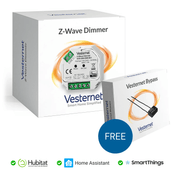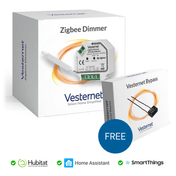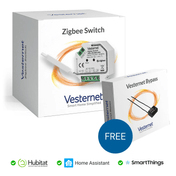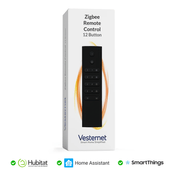Fire incidents continue to pose significant threats to property and life, with statistics revealing thousands of fires occurring annually across residential and commercial properties. Traditional standalone smoke detectors often fail during critical moments when occupants are away or unable to respond, leaving properties vulnerable to extensive damage. The demand for professional-grade fire safety solutions has grown substantially as property owners recognise the limitations of basic detection systems that cannot provide 24/7 monitoring or instant emergency notifications during unattended periods.
Modern smart smoke detection systems revolutionise fire safety through connected monitoring capabilities, multi-sensor technology, and intelligent detection algorithms that dramatically improve response times and reduce false alarms. These advanced systems provide instant smartphone alerts, seamless integration with professional monitoring services, and comprehensive coverage through networked devices that create unified safety networks. By combining sophisticated sensor technology with reliable wireless connectivity, today's monitored fire alarm systems deliver unprecedented protection that adapts to diverse environments and user requirements.
This comprehensive guide explores eight essential factors for selecting professional smoke detection systems, covering wireless communication protocols, advanced sensor technologies, monitoring integration options, and performance considerations. Understanding these critical elements ensures informed decision-making when implementing fire safety solutions that meet professional standards and deliver reliable emergency protection.
1. Wireless Communication Protocol Compatibility
Selecting the appropriate wireless communication protocol forms the foundation of any monitored fire alarm system, determining connectivity range, network reliability, and smart home integration capabilities. Z-Wave and Zigbee protocols dominate the professional fire safety landscape, each offering distinct advantages for emergency communications.

Z-Wave Protocol Advantages
- Superior range capabilities extending up to 1.6km with Long Range variants
- Mesh networking with automatic route optimisation for enhanced reliability
- Minimal interference due to dedicated frequency bands
- Backwards compatibility ensuring long-term system scalability
Z-Wave systems excel in larger properties and commercial applications where extended range and rock-solid connectivity are paramount. The protocol's mesh networking capabilities ensure that fire alarm signals reliably reach monitoring hubs even when individual devices experience connectivity challenges, making it ideal for multi-storey buildings and expansive installations.
2. Multi-Criteria Detection Technology
Advanced sensor technologies distinguish professional-grade smoke detectors from basic residential units by intelligently analysing multiple fire indicators simultaneously. Multi-criteria detection systems combine optical smoke sensing, heat detection, and sophisticated algorithms to accurately identify genuine fire conditions while filtering out common false alarm triggers.
Optical smoke detection technology uses advanced photoelectric sensors to detect smoke particles characteristic of different fire types, while integrated heat sensing monitors temperature changes that indicate developing fire conditions. These systems employ intelligent algorithms that analyse sensor data patterns to differentiate between legitimate fire hazards and benign conditions like cooking smoke or steam.

Key Detection Technologies
- Photoelectric sensors for early smoke detection across various fire types
- Thermal sensors monitoring rapid temperature increases
- Intelligent algorithms filtering false alarms from cooking and humidity
- Multi-criteria analysis combining smoke and heat data for accurate detection
3. Professional Monitoring Integration
Professional fire alarm monitoring services provide 24/7 surveillance and emergency response coordination that transforms basic smoke detectors into comprehensive safety systems. These services connect directly to monitoring centres staffed by trained professionals who can coordinate emergency responses, verify alarm conditions, and dispatch appropriate services when property owners are unavailable.
Essential Monitoring Features
- Direct connectivity to certified monitoring centres
- Automated emergency service dispatch capabilities
- Verification protocols to confirm genuine emergency conditions
- Multi-channel communication systems ensuring reliable notifications
Fire alarm monitoring integration requires devices with compatible communication protocols and certification standards that meet professional monitoring service requirements. Systems must reliably transmit alarm signals, device status information, and maintenance alerts to monitoring centres while providing property owners with real-time notifications and system status updates.
4. Network Reliability and Redundancy
Interconnected alarm networks create fail-safe systems where multiple detectors communicate to ensure comprehensive coverage and reliable emergency notifications. Mesh networking capabilities enable individual detectors to relay alarm signals through neighbouring devices, maintaining connectivity even when direct communication paths are compromised.

Network redundancy becomes critical during emergencies when reliable communication can mean the difference between early detection and catastrophic damage. Professional systems incorporate multiple communication pathways and backup protocols that ensure alarm signals reach monitoring centres and property owners regardless of individual device failures or communication disruptions.
Network Reliability Features
- Mesh networking with automatic route healing capabilities
- Multiple communication pathways for enhanced redundancy
- Device status monitoring and health reporting
- Backup communication protocols during network disruptions
5. Power Management and Battery Life
Professional fire safety installations demand robust power management systems that ensure continuous operation regardless of mains power availability or disruptions. Battery-operated systems offer installation flexibility and independence from electrical infrastructure, while mains-powered units provide consistent operation with battery backup for emergency situations.
Power System Considerations
- Extended battery life ratings (3-10 years) for minimal maintenance
- Low-power consumption features maximising operational longevity
- Battery status monitoring with advance replacement notifications
- Mains power compatibility with backup battery systems
Long-term maintenance requirements significantly impact the total cost of ownership for monitored fire alarm systems. Devices with extended battery life and intelligent power management reduce maintenance visits and operational disruptions while ensuring consistent protection. Professional installations particularly benefit from systems that provide advance warning of battery replacement needs and detailed power consumption monitoring.
6. Installation Flexibility and Certification
Professional fire safety installations require systems that accommodate diverse architectural requirements while meeting stringent certification standards. Tool-free installation capabilities and retrofit compatibility enable fire alarm installers to deploy comprehensive coverage efficiently across existing buildings without extensive structural modifications.
Certification standards like EN 14604 ensure devices meet professional fire safety requirements for commercial applications and insurance compliance. These certifications validate detection accuracy, reliability standards, and compatibility with professional monitoring systems that meet regulatory requirements across different property types and applications.
Installation Requirements
- Tool-free mounting systems for rapid deployment
- Retrofit compatibility with existing fire safety infrastructure
- EN 14604 certification for professional applications
- Flexible mounting options accommodating diverse ceiling types
7. Advanced Alert and Notification Systems
Comprehensive notification systems ensure emergency alerts reach property owners and relevant personnel through multiple communication channels regardless of location or time. Smartphone integration provides instant notifications with detailed alarm information, while multi-channel alert systems incorporate sound levels, LED indicators, and customisable notification preferences.
Notification System Features
- Smartphone apps with real-time alarm notifications and system status
- Customisable alert preferences for different emergency scenarios
- High-decibel audio alerts meeting professional sound level requirements
- LED indicator systems providing visual alarm confirmation
Advanced notification systems integrate with existing communication infrastructure to provide comprehensive coverage across different user preferences and accessibility requirements. These systems ensure critical fire safety information reaches appropriate personnel through preferred communication methods while maintaining compatibility with professional monitoring services and emergency response protocols.
8. Environmental Durability and Performance Range
Professional-grade smoke detectors must operate reliably across diverse environmental conditions while maintaining detection accuracy and communication capabilities. Operating temperature ranges, humidity tolerance, and IP ratings determine suitability for different installation environments from climate-controlled offices to industrial facilities with challenging conditions.
Environmental durability directly impacts long-term system reliability and maintenance requirements. Professional installations particularly benefit from devices engineered to withstand temperature fluctuations, humidity variations, and dust exposure while maintaining consistent performance and communication reliability over extended operational periods.
Environmental Performance Specifications
- Wide operating temperature ranges (-10°C to +60°C) for diverse environments
- Humidity tolerance preventing condensation-related malfunctions
- IP rating specifications ensuring protection against dust and moisture
- Long-term stability maintaining detection accuracy over operational lifespan
Our Professional Fire Safety System Recommendations

Budget-Conscious Professional Installations
For budget-conscious professional installations, the Z-Wave Aeotec SmokeShield offers exceptional value by upgrading existing Ei smoke detectors with smart connectivity. This solution provides up to 5 years of battery life, Z-Wave Long Range support up to 1.6km, and seamless integration with existing fire safety infrastructure through tool-free installation.
Comprehensive Multi-Sensor Protection
For comprehensive multi-sensor protection, the Z-Wave Heatit Z-Smoke 2 delivers premium performance with advanced multi-criteria detection technology. This mains-powered system intelligently distinguishes between fast-burning flames and slow-smoldering fires while filtering out cooking smoke, making it ideal for commercial applications requiring both smoke and heat detection capabilities.
Zigbee-Based Smart Home Integration
For Zigbee-based smart home ecosystems, the Frient Intelligent Smoke Sensor and Heat Alarm provide specialised detection options. The smoke sensor offers battery-powered convenience with loud audio alerts and smartphone notifications, while the heat alarm specifically addresses environments prone to false alarms from dust, humidity, or cooking activities, both featuring interconnected alarm capabilities for comprehensive coverage.
Conclusion
Professional smoke detection systems with monitoring capabilities represent a crucial investment in comprehensive fire safety, offering advanced multi-sensor technology, reliable wireless connectivity, and 24/7 emergency notification systems that far exceed traditional standalone detectors. The integration of smart protocols like Z-Wave and Zigbee enables seamless connectivity with professional monitoring services while providing instant alerts regardless of your location.
When implementing your professional fire safety system, start by assessing your specific environment and monitoring requirements, then select devices based on protocol compatibility and sensor technology needs. Consider factors like installation complexity, power requirements, and integration with existing safety infrastructure to ensure optimal performance and compliance with professional standards.
Explore Vesternet's comprehensive smoke detection collection to discover professional-grade fire safety solutions that meet your specific monitoring requirements. Our technical experts are available to provide guidance on system design, protocol selection, and integration planning to help you create a robust fire safety network that delivers reliable protection and peace of mind.


















